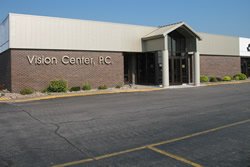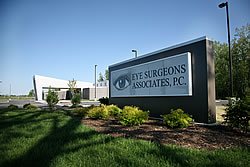Martin O’Malley M.D.
According to the American Academy of Ophthalmology, it has been estimated that by age 75 about 70% of people will have cataracts. Let’s discuss a few things about cataracts and how they are treated.
What is a cataract?
A cataract is when the lens of the eye becomes cloudy over time, and interferes with your vision. Often, this change happens slowly, over a period of years. It can also happen more rapidly, and can be associated with certain medications, trauma, diseases, or prior eye surgery.
What are the symptoms of cataract?
A cataract causes your vision to become blurred, dim, or discolored. It has been described as “like looking through a dirty window” or a “foggy” appearance to the vision. Colors can appear diminished or muted. Night time can seem darker, and oncoming headlights may produce significant glare. As the condition progresses, it may not be possible to improve your vision with glasses.
What can be done to treat cataracts?
Early on in the development of cataracts, changing your glasses prescription may help you to see better. When your vision can no longer be improved with glasses and is interfering with your ability to enjoy your daily activities, it may be time to discuss whether surgery for your cataract could improve your vision.
What is cataract surgery?
Cataract surgery is the removal of your cataract (the cloudy lens of your eye) and replacement with an artificial lens implant. Cataract surgery is an outpatient procedure, and you return home the same day as your surgery. The procedure may take from 15-30 minutes, and you will need to use prescription eye drops for a few weeks following the procedure. Most people notice improvement in their vision within the first week following surgery.
Are there different types of cataract surgery options?
There have been a number of advances in the technology surrounding cataract surgery. The type of artificial lens that is implanted can sometimes be used to correct some forms of astigmatism. Additionally, laser surgery can be combined with cataract surgery in some patients to try to reduce their dependence upon glasses. You should discuss whether you are a candidate for these types of procedures with your eye surgeon.
Bio: Dr. O’Malley is a Board Certified Ophthalmologist with Eye Surgeons Associates. His specialty interests are in the surgical treatment of cataracts with the latest techniques and comprehensive ophthalmology. For more information, visit https://www.eyesurgeonspc.com/bettendorf/what-is-a-cataract.htm .
The material contained in this article is for informational purposes only and is not intended to be a substitute for professional medical advice, diagnosis, or treatment. Always seek the advice of your physician or other qualified health care provider.




